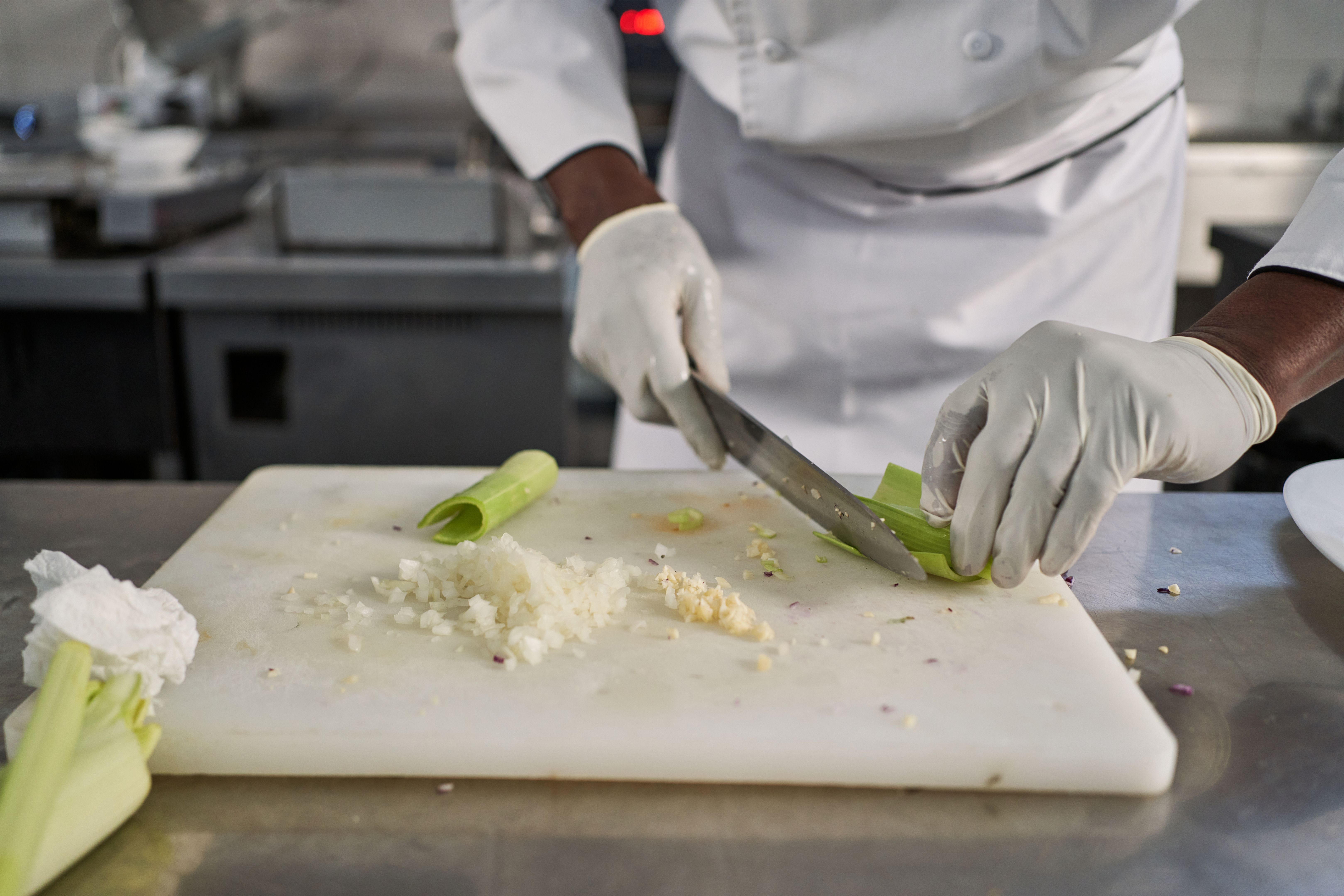Essential Guide to Cut-Resistant Gloves for Safe Food Prep
Understanding Cut-Resistant Gloves
When it comes to food preparation, safety is a top priority. One essential tool in the kitchen for ensuring safety is the cut-resistant glove. These gloves are specifically designed to protect your hands from sharp knives and other kitchen tools, reducing the risk of injuries.
Cut-resistant gloves are made from various materials that offer different levels of protection. Understanding these materials and how they work can help you choose the best pair for your needs.

Materials Used in Cut-Resistant Gloves
There are several types of materials used in the manufacture of cut-resistant gloves, each offering varying degrees of protection. Common materials include:
- Kevlar: Known for its strength and durability, Kevlar is often used in high-performance cut-resistant gloves.
- Dyneema: This material is lightweight yet provides excellent cut resistance, making it a popular choice for kitchen gloves.
- Steel Mesh: Often used in butcher gloves, steel mesh provides maximum protection against cuts and punctures.
Choosing the Right Level of Protection
Cut-resistant gloves come in different levels of protection, typically measured by standards such as ANSI or EN388. It's important to select gloves that match the level of risk associated with your food preparation tasks. Consider the following guidelines:
- Low-Risk Tasks: For tasks like handling fruits and vegetables, a lower level of cut resistance may suffice.
- Medium-Risk Tasks: For slicing meats or using mandolins, a medium level of protection is recommended.
- High-Risk Tasks: Tasks involving butchering or working with very sharp blades require the highest level of protection.

Caring for Your Cut-Resistant Gloves
Proper care and maintenance of your cut-resistant gloves can extend their lifespan and keep them effective. Follow these tips to ensure your gloves remain in top condition:
- Regularly wash your gloves according to the manufacturer's instructions to prevent contamination.
- Inspect your gloves before each use for any signs of wear or damage.
- Store your gloves in a dry, cool place to prevent material degradation.
The Benefits of Using Cut-Resistant Gloves in Food Prep
Using cut-resistant gloves in food preparation offers several advantages. Not only do they protect your hands from potential injuries, but they also promote faster and more efficient work. Knowing you have an added layer of safety can increase your confidence when handling sharp tools.

Moreover, these gloves are not just for professional chefs. Home cooks can greatly benefit from using them, especially when trying new recipes or techniques that involve sharp instruments.
Conclusion
Incorporating cut-resistant gloves into your kitchen routine is a simple yet effective way to enhance safety during food preparation. By choosing the right materials and level of protection, and maintaining them properly, you can significantly reduce the risk of accidents in the kitchen. Whether you’re a professional chef or a home cooking enthusiast, investing in quality cut-resistant gloves is a wise decision for your culinary adventures.
Commercial Kitchen Marketplace
Your one-stop online destination for equipping professional kitchens. Discover a wide selection of durable, high-quality commercial-grade appliances, from heavy-duty ovens and refrigeration units to efficient food preparation tools and essential kitchenware. Visit our store: http://avice.org
